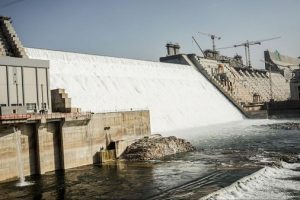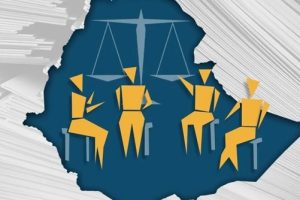
The author of this article has written a number of articles on GERD over the last several years. Ethiopia’s commitment to construct a hydroelectric power station has faced a lot of challenges both at the global and regional level from those who do not wish to see the country thrust from thousands of years of poverty.
From the outset, this flagship project was started in a spirit of pan Africanism, equitable resource sharing and joint development for African countries. However, Egypt and Sudan remained to stick on clonial water treaties which deliberately ostracized, ignored and undermined the right of a source country to use its resources for national development.
A web of conspiracy, sabotage and undermining Ethiopia’s economic sovergnnity was trumpeted from Arab League to Europe and to the UNSC which took the issue of GERD as a debatable agenda for 12 sessions over a single year.
Today however, things are rapidly changing as the world has come to realize that Ethiopia is not constructing GERD blinded by selfish national egoistic interest but for the benefit of Africa as well. Now scientists across the world are speculating on how GERD can help to successfully improve the socio-economic and political landscape in Africa. The total completion of GERD is closing in and the world will witness the tenacity and valor exhibited by the people and government of Ethiopia in lighting up Ethiopia and Africa with ultra-modern renewable electric power source.
The bottom-line of Africa’s economic integration lies in integration of renewable energy resources on which GERD is a pioneering project constructed under the highest level of technological innovations.
The Grand Ethiopian Renaissance Dam (GERD) stands as a monumental project in Ethiopia’s journey towards development. Located on the Blue Nile River, the dam is set to become Africa’s largest hydroelectric power plant. At the same time, Africa is undergoing a historic push toward economic integration, aiming to unify its diverse economies for increased trade, investment, and growth. This essay explores the role of GERD in the broader context of African economic integration, highlighting its potential to be both a source of regional cooperation and a catalyst for economic transformation.
GERD is situated near Ethiopia’s border with Sudan, harnessing the waters of the Blue Nile for hydroelectric power generation. Once completed, it will have a capacity of over 6,000 megawatts, making it the largest hydropower project in Africa. The dam’s objectives are multi-fold: to provide Ethiopia with a reliable electricity supply, boost industrialization, generate export revenues through electricity sales, and reduce poverty by powering economic activities.
The dam is a symbol of Ethiopia’s ambition to harness its natural resources for sustainable development. It promises to transform Ethiopia’s energy landscape, which is critical in a region where access to reliable electricity remains a significant challenge.
African economic integration seeks to bring together African nations to foster economic growth through cooperation and unified markets. Initiatives like the African Continental Free Trade Area (AfCFTA) and various Regional Economic Communities (RECs) such as ECOWAS, EAC, and SADC aim to reduce trade barriers, improve infrastructure, and facilitate the free movement of goods, services, and capital.
Energy infrastructure is vital for these integration efforts. Reliable power supply enables industrial growth, reduces production costs, and attracts investments—key elements for an integrated and competitive African economy.
GERD is not only a national project but a regional one with significant implications for Africa’s economic integration. The dam has the potential to enhance energy security in the Horn of Africa by supplying electricity to neighboring countries like Sudan and beyond. This aligns with the African Union’s vision of interconnected power systems and regional power pools.
Furthermore, GERD could promote regional cooperation by fostering dialogue on shared water resource management. Although tensions exist between Ethiopia, Sudan, and Egypt regarding water rights, successful collaboration could set a precedent for transboundary resource management, crucial for Africa’s integration agenda.
By boosting Ethiopia’s electricity exports, GERD could stimulate cross-border trade and economic interdependence, strengthening the continent’s integration efforts.
Despite its promise, GERD faces challenges, especially political disputes over the Nile waters. Egypt and Sudan have expressed concerns about water availability and dam operations, necessitating diplomatic engagement and legal frameworks to ensure equitable and sustainable use.
Nonetheless, the opportunities are significant. GERD’s success could drive industrialization in Ethiopia, improve energy access in the region, and foster economic growth that benefits multiple countries. It can also demonstrate how large infrastructure projects contribute to continental integration by linking economies through shared resources and cooperation.
The Grand Ethiopian Renaissance Dam is more than an infrastructure project; it is a potential catalyst for African economic integration. By enhancing energy supply and promoting regional cooperation, GERD exemplifies how strategic investments can support Africa’s vision of unity and development. For GERD to fully realize its benefits, collaborative frameworks must be strengthened, ensuring that shared resources contribute to peace, stability, and prosperity across the continent.
GERD is a major tool for energy integration, security and industrialization and regional economic cooperation. As it provides access to clean energy, it catalyzes integration in all economic sectors in the region. With thee production capacity of 5,150 MW, the electricity generated from the dam joins the energy market and will help to strengthen the East African Power Pool (EAPP)and Africa’s Single Electric Market (AfCEM) Moreover, it promotes cross border industrialization power value chain.
GERD creates a wider zone of peace in Africa by creating confidence among nation to commit to peaceful development and cooperation. As mentioned above, the dam sets an example for all other dams to be constructed in Africa and by transfer of technological knowhow, it accelerates economic integration among African countries.
As the author has stated several times, GERD will strengthen the fulfilment of the major objectives of NBI and the reason why the Nile Council is established. Besides, the construction and sharing of power from GERD synchronizes with the goals for which Agenda 2063 is instituted in Africa under the auspices of the AU.
While the major countries of the west are engaged in trade protectionism and reciprocal tariff, African countries should pool together their resources like GERD to develop AfCEFTA to a greater stage for shared economic growth and development.
Renewable power sharing could also lead to the establishment of Africa’s common market in which the resources in the continent are shared to accelerate African economic development.
Sharing cheap, clean and renewable energy resources in Africa will also promote environmental protection and the conservation of the natural resources of the continent.
The construction of GERD sets a school on hydro-engendering from African students who are eager to develop home grown modern technologies for water management and economic use.
Experience gained by Ethiopian engineers on environmental and hydrological modeling tools, gird infrastructure for electricity distribution, onsite training for Ethiopian engenders could be replicated to the east of African countries so that they can construct their own dams in partnership with other countries or on their own,
Ethiopian universities can organize academic partnership with other African countries on the areas of hydropower engendering Moreover, African countries can leader from the experience that Ethiopia has gained inn integrating power generated from renewable sources into one system of power management. This would mean integrating hydropower with power from wind farms, solar energy and geothermal sources.
GERD has a greater regional significance as it sets an example for African countries and their leaders utilize their resources for the development of their respective countries. Experience gained at GERD in terms of technological innovations, use of renewable energy for promoting economic cooperation and energy integration will certainly motivate Africans to be self-reliant in energy development and other spheres of economic activities.
In the current global trend in which conservative nationalism is overtaking globalization, African leaders should come together and design appropriate and nationally applicable strategies on self-reliance in every aspect including financing their projects from local sources.
Although GERD has to do with technology and economic development, it will create a greater impact on the political developments in the continent. It shows what African countries can do if they act in unison for the development of Africa at large.
As the writer has repeatedly indicated, such mega projects like GERD will help to promote peace and economic cooperation among the countries of the continent. History shows that no country in Africa can develop in isolation from the countries of the region and working for continental development requires leadership commitment and change of attitude on further promoting the goals of pan Africanism.
The construction of GERD and its final utilization by Ethiopia and sharing of hydroelectric power through power markets involves educational and technological diplomacy that Ethiopia can use to foster unity among the African countries and would help to promote wider innovations in science and technology.
Ethiopia’s National technology Transfer Policy prioritizes IP flexibility and STEM education which could also be shared with the rest of Africa.
All told, GERD has accelerated Ethiopia’s transition to technology enabled economy though challenges like geopolitical disputes and IP limitations persist. The project underscores how infrastructure mega projects can catalyze long term technological sovereignty when paired with strategic partnerships and education reforms, for sustained successes. Ethiopia can blend foreign technological collaboration with local creativity and innovations for self-reliance in multi-purpose and multi-sector technological development.
The package of benefits that GERD is bringing for Ethiopia will not be limited to the country but surpasses generations in Africa. The anecdote in Amharic which goes, “ the Blue Nile is not sure of its destination but keeps on rolling logs” will no more hold GERD is busy at home generation power for Ethiopia and Africa.
BY SOLOMON DIBABA
THE ETHIOPIAN HERALD THURSDAY 22 MAY 2025



